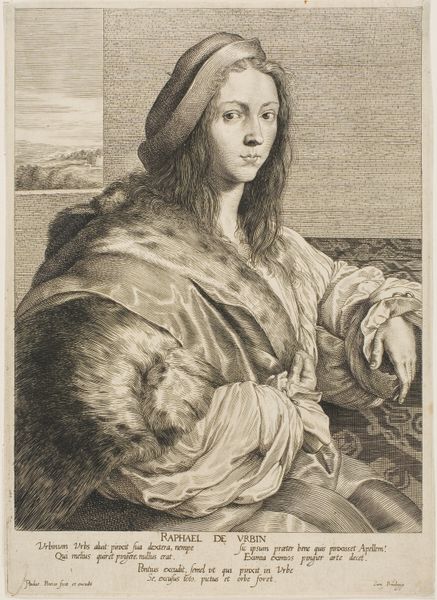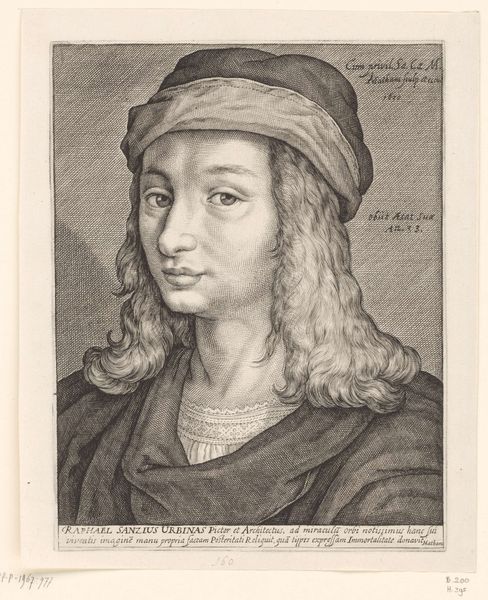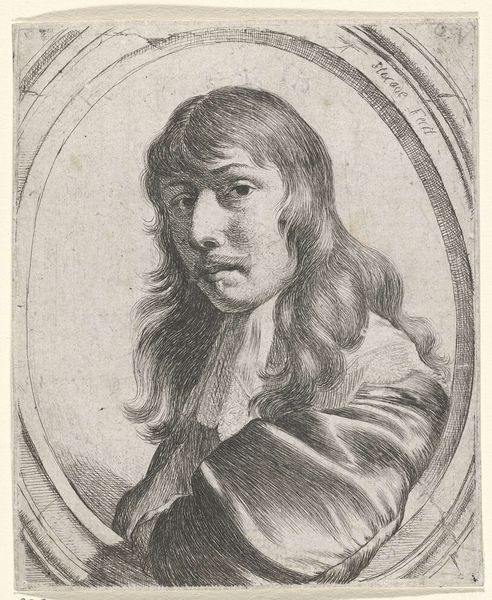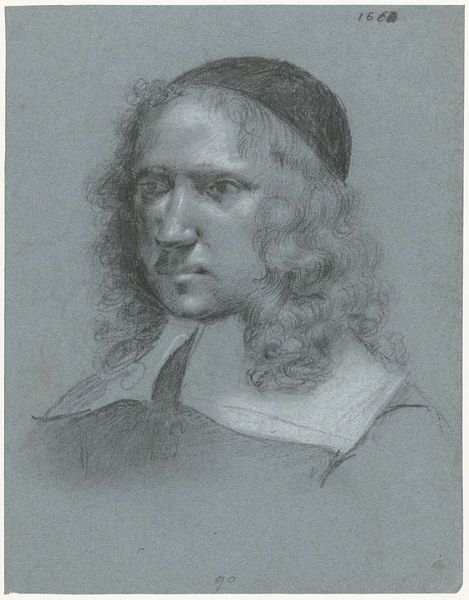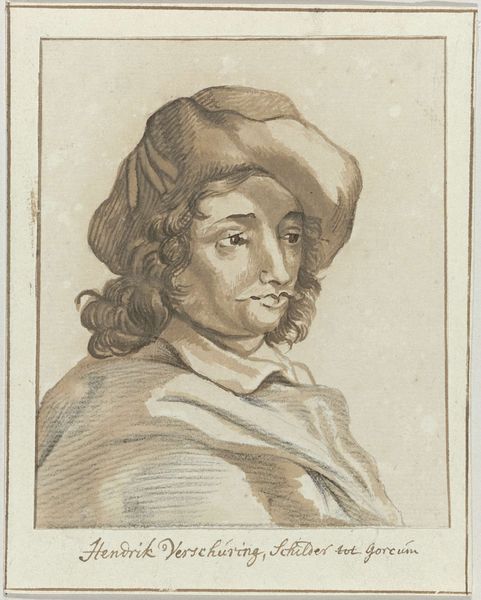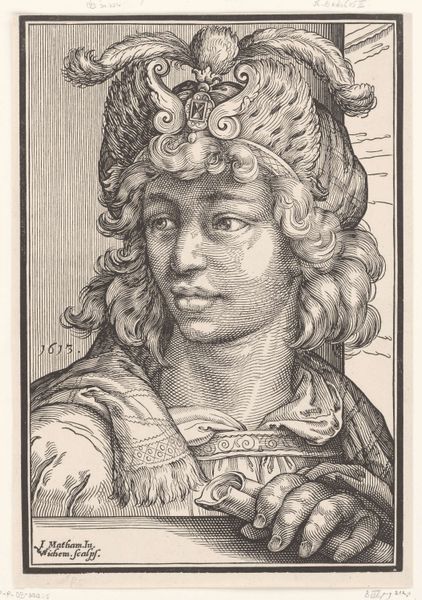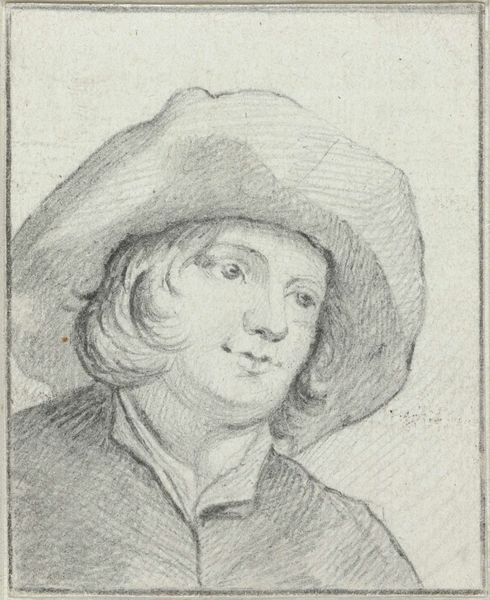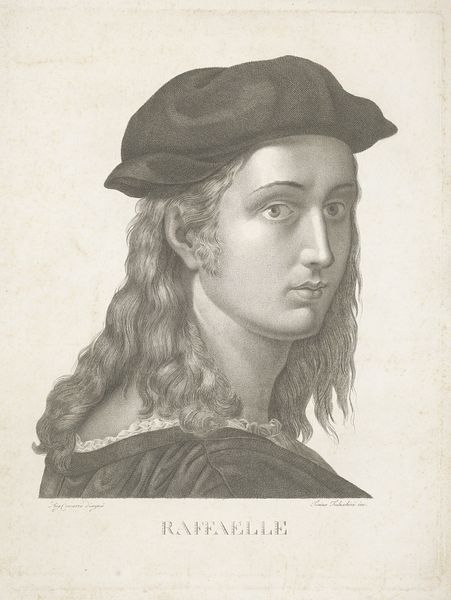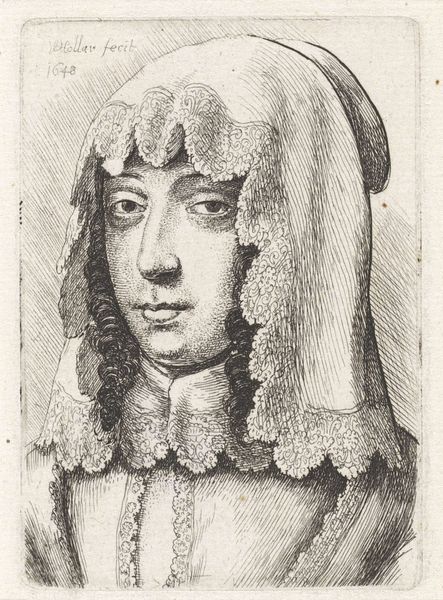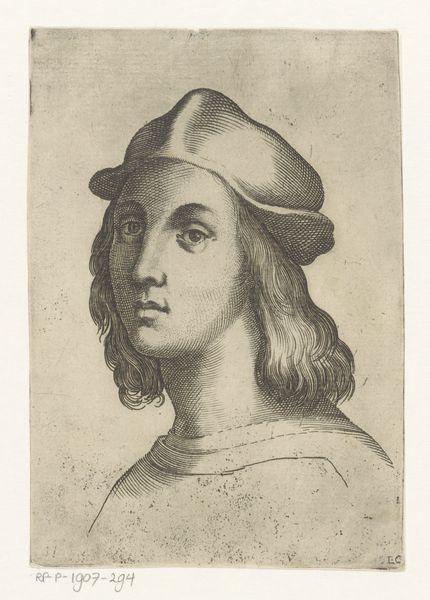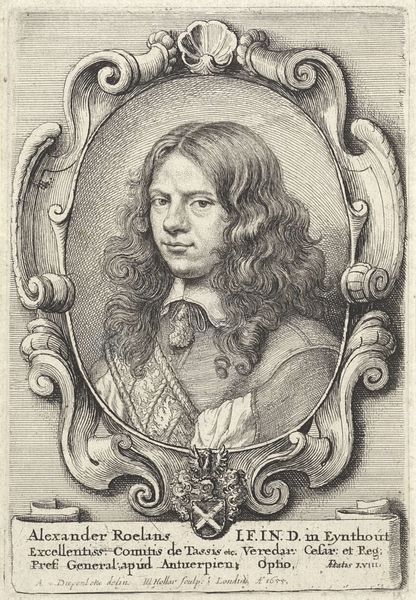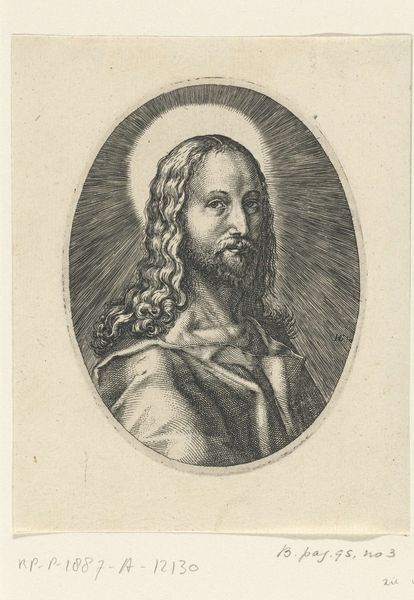
Portret van een jonge man met lang krullend haar en een muts 1646
0:00
0:00
drawing, print, metal, engraving
#
portrait
#
drawing
#
baroque
# print
#
metal
#
old engraving style
#
portrait drawing
#
engraving
Dimensions: height 97 mm, width 66 mm
Copyright: Rijks Museum: Open Domain
Editor: So this is “Portret van een jonge man met lang krullend haar en een muts,” from 1646, by Wenceslaus Hollar. It’s a print, an engraving... the fine lines are really striking. There's a delicacy about it, but the subject's gaze also feels direct. What stands out to you when you look at this work? Curator: It’s a fascinating piece. Considering the era, the gaze, as you pointed out, does challenge typical portrait conventions. While seemingly a straightforward portrait, its existence as a print complicates matters. How does this portrait, multiplied and distributed, challenge the power dynamics of portraiture that usually celebrate individual status? Who did it intend to empower, or question? Editor: I never considered the power dynamics in printmaking. Curator: Think about it: who could afford an original painted portrait versus who could access a printed copy? Hollar made several portraits, frequently connected with intellectual and political elites, reflecting the networks circulating at the time. Can you see any element here, a gesture, detail of the dress, or simply his youth, that might betray a potential allegiance, perhaps an aspiration? Editor: Hmm, well, his hat is interesting – it looks pretty fancy and adds a softness with those curls. It could suggest nobility or someone aspiring to that status. Also, now that you mention it, I’m seeing his youth reflected in his soft expression… almost as if it’s presenting his potential. Curator: Exactly. He may have used these features in hopes to represent this individual not just as they are but also as who they might become. Furthermore, notice the light in this engraving, highlighting his face and the finery of his clothing. Hollar used that contrast to elevate the subject within a society obsessed with visual status and markers of authority. But who did this ‘elevating’ serve? That remains an open, crucial, question to pose. Editor: It's a completely different way of understanding portraits... thank you! I’m walking away seeing more to it than initially thought. Curator: Precisely. Questioning intention opens up possibilities for meaningful connection.
Comments
No comments
Be the first to comment and join the conversation on the ultimate creative platform.

